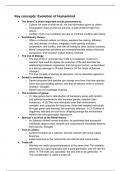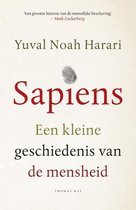Summary
Summary Evolution of Humankind - UvA
- Course
- Institution
- Book
The key concepts from the lecture and the book 'Sapiens' by Yuval Noah Harari are explained, and important notes are added. The lecturer of the course is dr. Jeroen P. Bruggeman.
[Show more]




